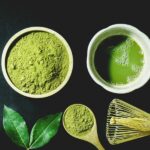Goo. It’s a simple, three-letter word that evokes a wide range of images and associations. From the sticky substance that clings to your fingers to the mysterious globs found in nature, goo is a fascinating and versatile substance with numerous forms and functions. In this article, we’ll delve into the science behind goo, exploring its composition, properties, and the various roles it plays in our everyday lives and the natural world.
Understanding Goo: What Is It?
Goo is a colloquial term used to describe a semi-fluid, viscous substance that can range in consistency from thin and runny to thick and sticky. While the word “goo” is often associated with synthetic or man-made substances like glue or slime, goo can also be found in nature in the form of mucus, slime molds, and other biological materials.
The Composition of Goo
The composition of goo varies depending on its specific form and function. Synthetic goos, such as glue and slime, are typically made up of polymers or long chains of molecules that give them their sticky and elastic properties. These polymers can be derived from natural sources like plants and animals or synthesized in a laboratory using chemical processes.
In nature, goo-like substances are produced by a wide range of organisms for various purposes. Mucus, for example, is produced by animals like humans and snails as a protective barrier for the skin and internal organs. Slime molds, on the other hand, are single-celled organisms that produce a slimy substance to aid in movement and foraging.
The Properties of Goo
One of the defining characteristics of goo is its viscosity, or resistance to flow. Goo can range from highly viscous, like honey or molasses, to relatively thin and fluid, like water or oil. This viscosity is determined by factors such as the size and shape of the molecules making up the substance, as well as external factors like temperature and pressure.
In addition to viscosity, goo may also exhibit other properties such as adhesion, cohesion, and elasticity. Adhesion refers to the ability of goo to stick to other surfaces, while cohesion refers to its ability to stick to itself. Elasticity allows goo to deform under stress and then return to its original shape once the stress is removed.
The Many Uses of Goo
Goo has a wide range of practical applications in various industries and fields. Some common uses of goo include:
- Adhesives and Sealants: Goo-like substances such as glue and caulk are used to bond materials together and create watertight seals in construction, manufacturing, and DIY projects.
- Lubricants: Thick, viscous oils and greases are used as lubricants to reduce friction and wear in mechanical systems such as engines, gears, and bearings.
- Cosmetics and Personal Care Products: Gooey substances like gels and creams are used in cosmetics and personal care products such as hair gel, moisturizers, and toothpaste.
- Food and Beverage Additives: Thickening agents like gelatin and agar are used to give foods and beverages a gooey texture or to stabilize emulsions and suspensions.
- Medical Applications: Goo-like substances such as hydrogels and bioadhesives are used in medical applications for wound healing, drug delivery, and tissue engineering.
Goo in Nature
In the natural world, goo serves a variety of important functions for different organisms. Mucus, for example, helps protect the delicate tissues of animals from dehydration, infection, and mechanical damage. Slime molds use their slimy secretions to move and forage for food, forming intricate networks that span forest floors and forest floors.
Gooey substances also play a crucial role in ecosystems as a source of food and habitat for other organisms. Many insects and small animals feed on the slime produced by fungi and bacteria, while larger animals like birds and mammals use sticky substances like tree sap and resin to build nests and capture prey.
Conclusion: Embracing the Versatility of Goo
In conclusion, goo is a fascinating and versatile substance with a wide range of forms and functions. From synthetic adhesives and lubricants to natural mucus and slime, goo plays a vital role in our everyday lives and the natural world around us. By understanding the science behind goo and appreciating its many uses, we can better harness its potential for innovation, creativity, and sustainability. So whether you’re sticking two pieces of paper together with glue or marveling at the intricate patterns formed by a slime mold, take a moment to appreciate the gooey wonders of the world.











